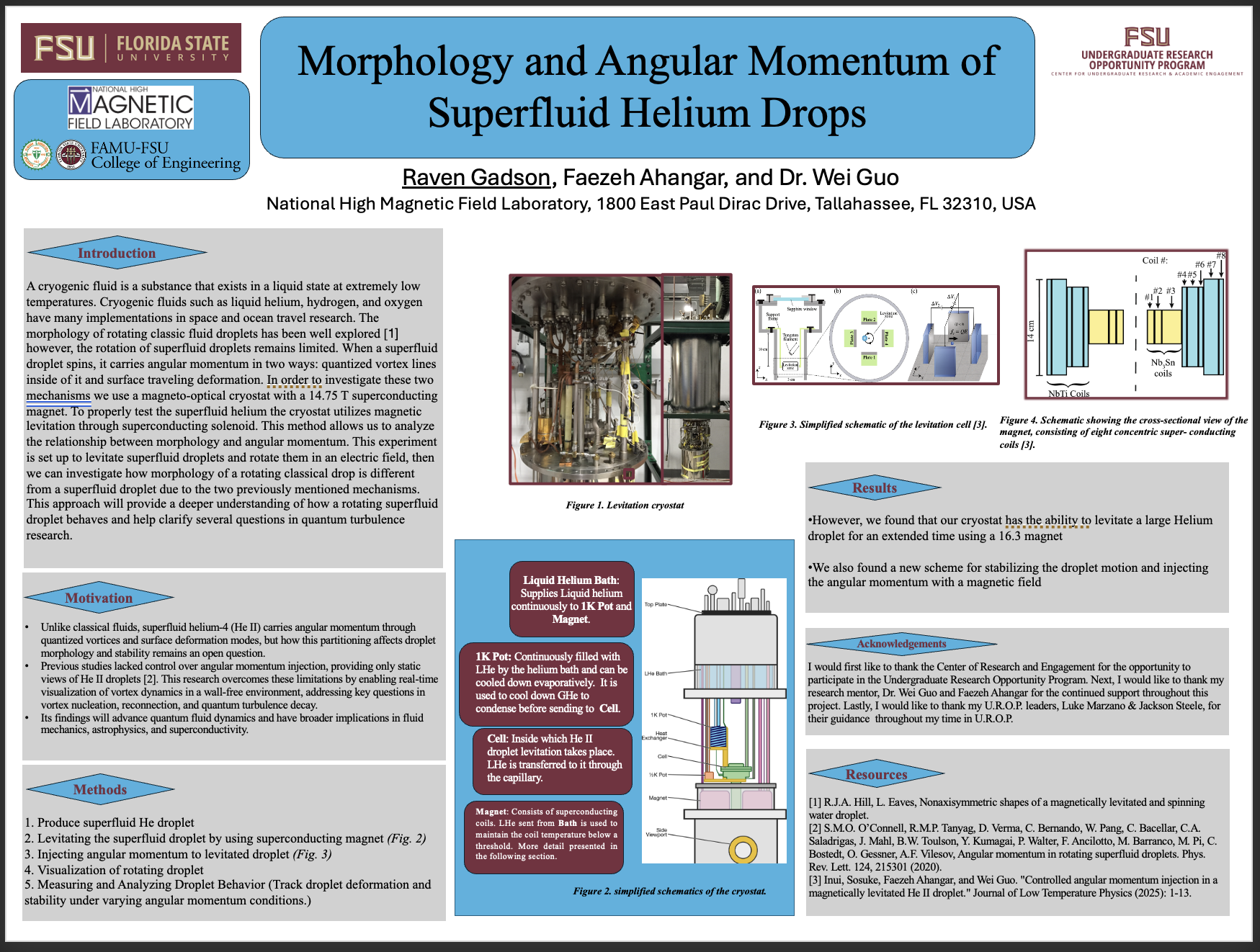Research Symposium
25th annual Undergraduate Research Symposium, April 1, 2025
Raven Gadson Poster Session 2: 10:45 am - 11:45 am/ Poster #227
BIO
Hello, my name is Raven Gadson. I am currently a second-year student at Florida State University, majoring in Pre-Clinical Professions with the goal of pursuing a career in medicine. With aspirations of attending medical school and specializing in Anesthesiology, I am committed to building a strong academic foundation and gaining hands-on research experience. In addition to my academic pursuits, I actively engage in several organizations that contribute to my personal and professional growth. I am a dedicated member of Phi Delta Epsilon, SISTUHS Inc., and serve as the Recruitment Chair for the Seminole Student Boosters, and I am member of the Florida State University club gymnastics team. I am grateful for the opportunity to participate in the Undergraduate Research Opportunity Program, where I have gained valuable research experience to complement my studies and future career goals.
Morphology and Angular Momentum of Superfluid Helium Drops
Authors: Raven Gadson, Dr. Wei GuoStudent Major: IMS Pre-Clinical Professions
Mentor: Dr. Wei Guo
Mentor's Department: MagLab Mentor's College: College of Engineering Co-Presenters:
Abstract
A cryogenic fluid is a substance that exists in a liquid state at extremely low temperatures. Cryogenic fluids such as liquid helium, hydrogen, and oxygen have many implementations in space and ocean travel research. The morphology of rotating classic fluid droplets has been well explored however, the rotation of superfluid droplets remains limited. When a superfluid droplet spins, it carries angular momentum in two ways. In order to investigate these two mechanisms we use a magneto-optical cryostat with a superconducting magnet. To properly test the superfluid helium the cryostat utilizes magnetic levitation. This method allows us to analyze the relationship between morphology and angular momentum. This experiment is set up to levitate superfluid droplets and rotate them in an electric field, then we can investigate how morphology of a rotating classical drop is different from a superfluid droplet. This approach will provide a deeper understanding of how a rotating superfluid droplet behaves and help clarify several questions in quantum turbulence research.
Keywords: Superfluid Helium, Cryogenics, and Morphology


